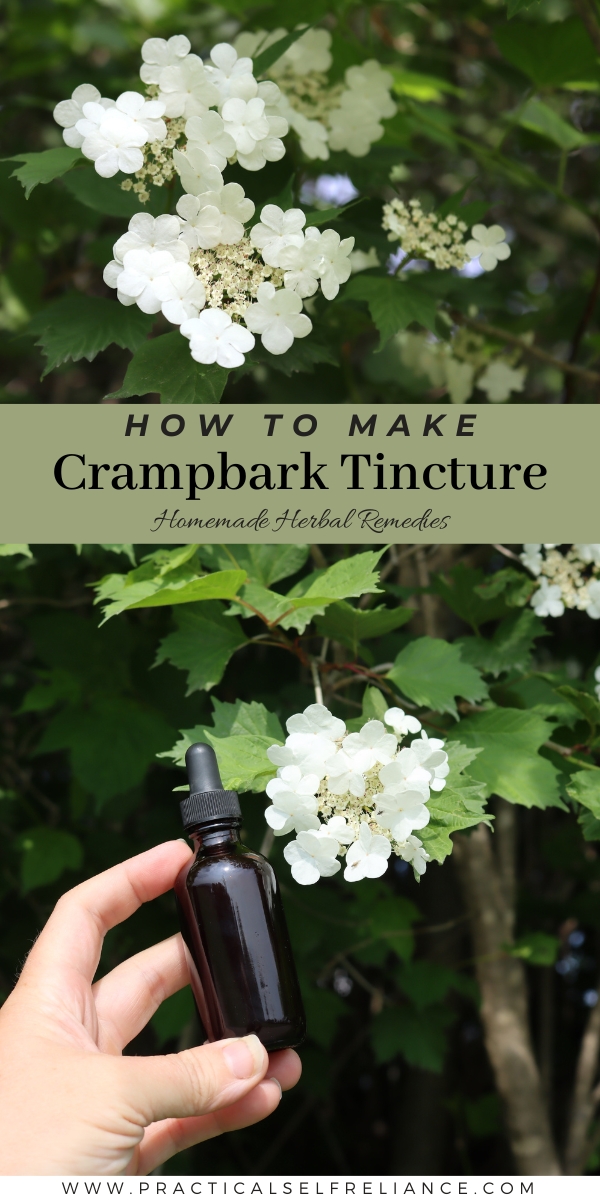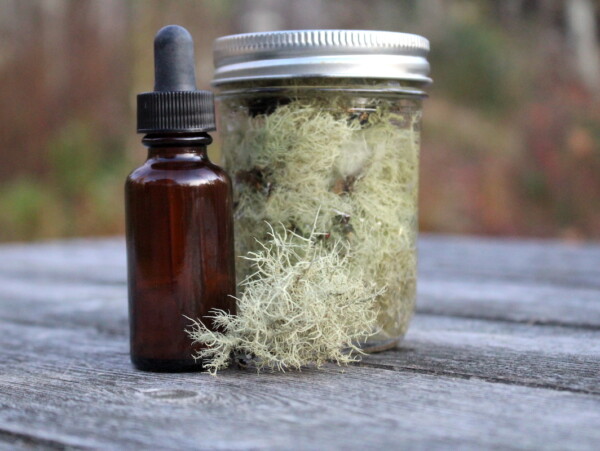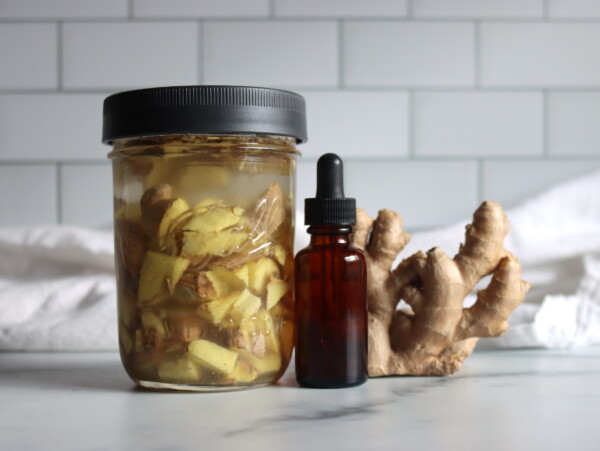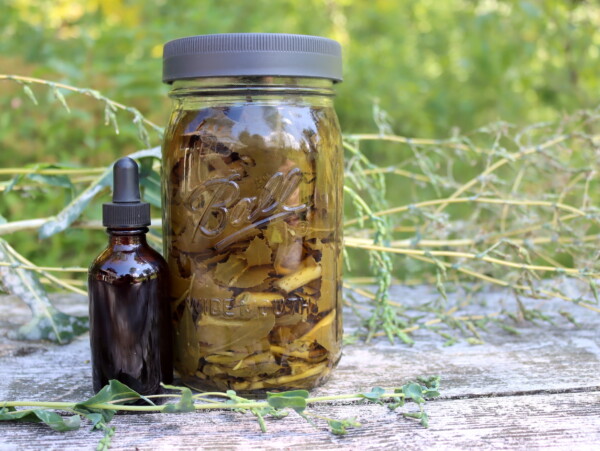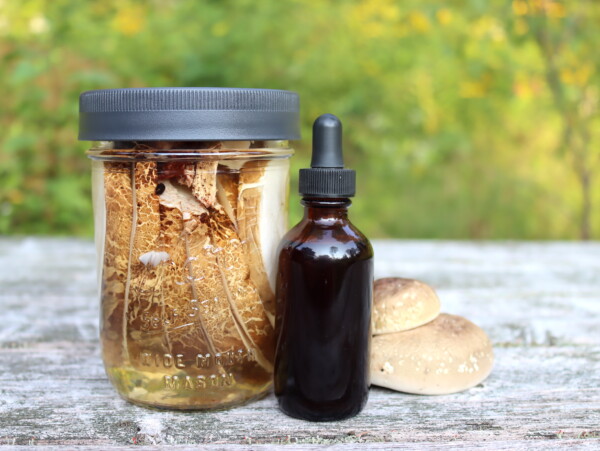Affiliate disclosure: This post may contain affiliate links. Please see our Privacy Policy.
Crampbark tincture is a gentle herbal remedy for cramps and muscle pain, and it’s been used since antiquity as a gentle pain reliever and anti-spasmotic. It’s especially effective (and fast acting) for menstrual cramps and spasmatic muscle pain (such as low back pain). It’s easy to make at home with just a few simple ingredients!
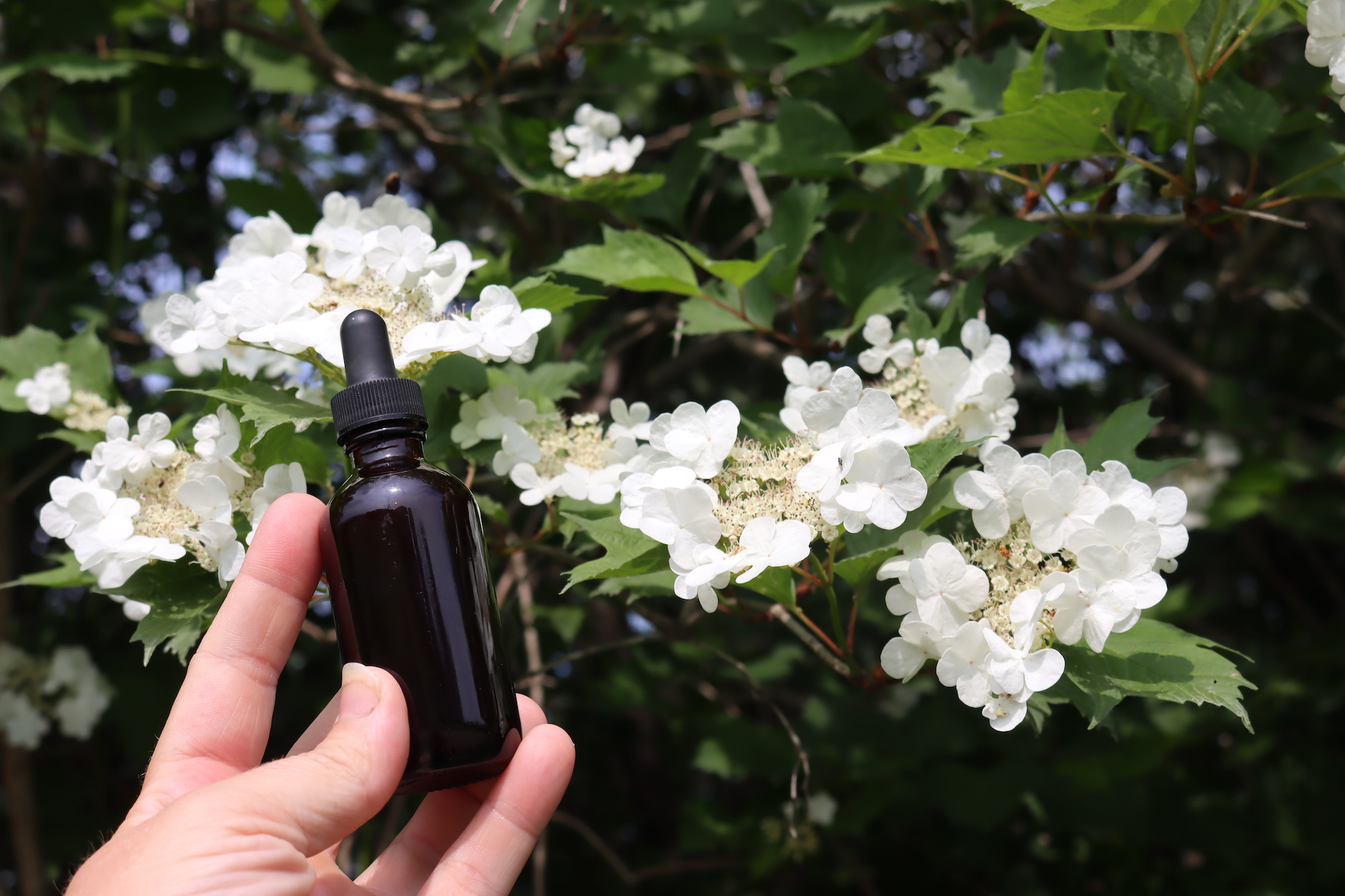
Crampbark is the herbal name for a common ornamental plant known as guelder rose or highbush cranberry. Generally, people growing this plant for it’s stunning early spring blossoms call it Guelder rose, and those harvesting the late fall edible cranberry like fruits call it highbush cranberry.
Of course, herbalists call it yet a third name, crampbark. The bark of this plant, which is more or less a bushy shrub, growing 4 to 12 feet tall with many small stems, is an incredibly effective anti-spasmodic herb with a long history of traditional use.
We forage highbush cranberries each autumn and winter, but since it’s destructive to the plant I tend to buy dried crampbark herb online for making crampbark tincture. I use it regularly for low back pain, sciatica and menstural cramps.
It’s usually the European species (Viburnum opulus) that’s discussed medicinally, but it readily hybridizes with similar US species (Viburnum trilobum and Viburnum edule), and all three are considered medicinal.
I’ll walk you through how to make your own crampbark tincture, with either fresh bark or purchased dried bark, but if you’re just looking for a source for the tincture, it can be purchased ready made here. This is the basic process for making crampbark tincture, but if you’re looking for more details, I’d recommend the Herbal Academy’s Tincture Making Course which covers everything you could ever want to know about making more than 100 different herbal tinctures, as well as half a dozen tincturing methods.
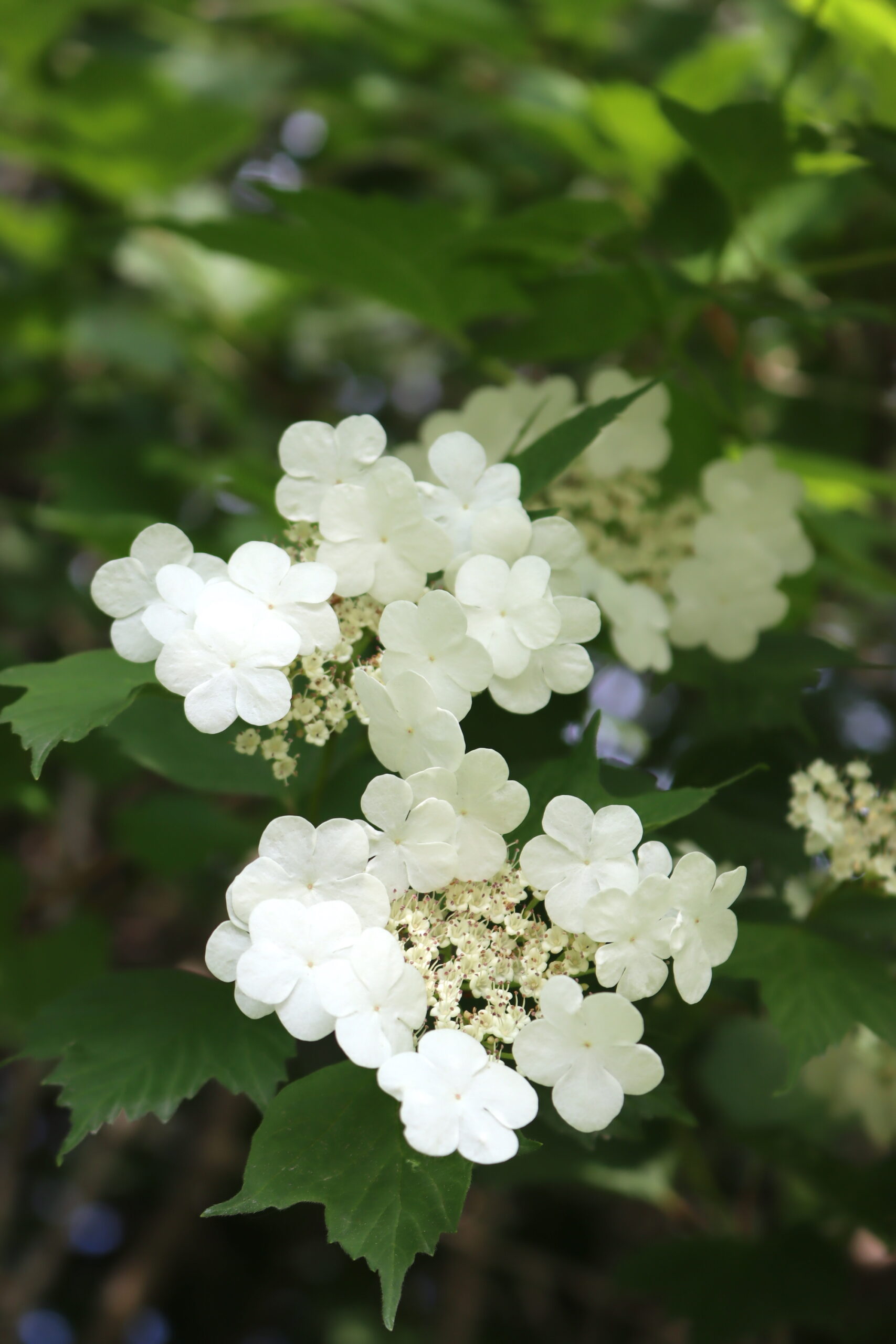
(Always consult your doctor or a clinical herbalist before trying any new herbal remedy, as there’s always the possibility of unintended consequences, allergic reaction, or interactions with other medication. If you’re harvesting wild plant material, make sure you’re 100% confident in your identification and consult multiple sources for your ID. The following is based on my research and experience, but I don’t claim to have any certifications that would qualify me to advise you on your health. Please do your own research and always verify with multiple reputable sources.)
Benefits of Crampbark Tincture
Although crampbark has a long history of being used to relieve pain associated with cramps and other uterine issues, there is very little formal research published on this potential healing benefit. There have been studies on crampbark as far as it being a part of a specific herbal formulation that helps soothe menstrual cramps, but so far nothing on its own. Since the middle ages, crampbark has been used as an anti-spasmodic to calm both skeletal and smooth tissue—which is why it gets its fame from it’s ability to remove some of the intensity associated with menstrual cramps.
Crampbark has traditionally been used to alleviate any kind of muscle tension, from tension headaches to arthritis, Raynaud’s, and other rheumatic conditions where inflammation and swelling are involved.
The European version is traditionally used (Viburnum opulus) when making a medicinal tincture, not US version, but both versions likely have the same or similar medicinal uses, so I wouldn’t fret about specific species ID as it’s very hard to tell them apart and they hybridize readily.
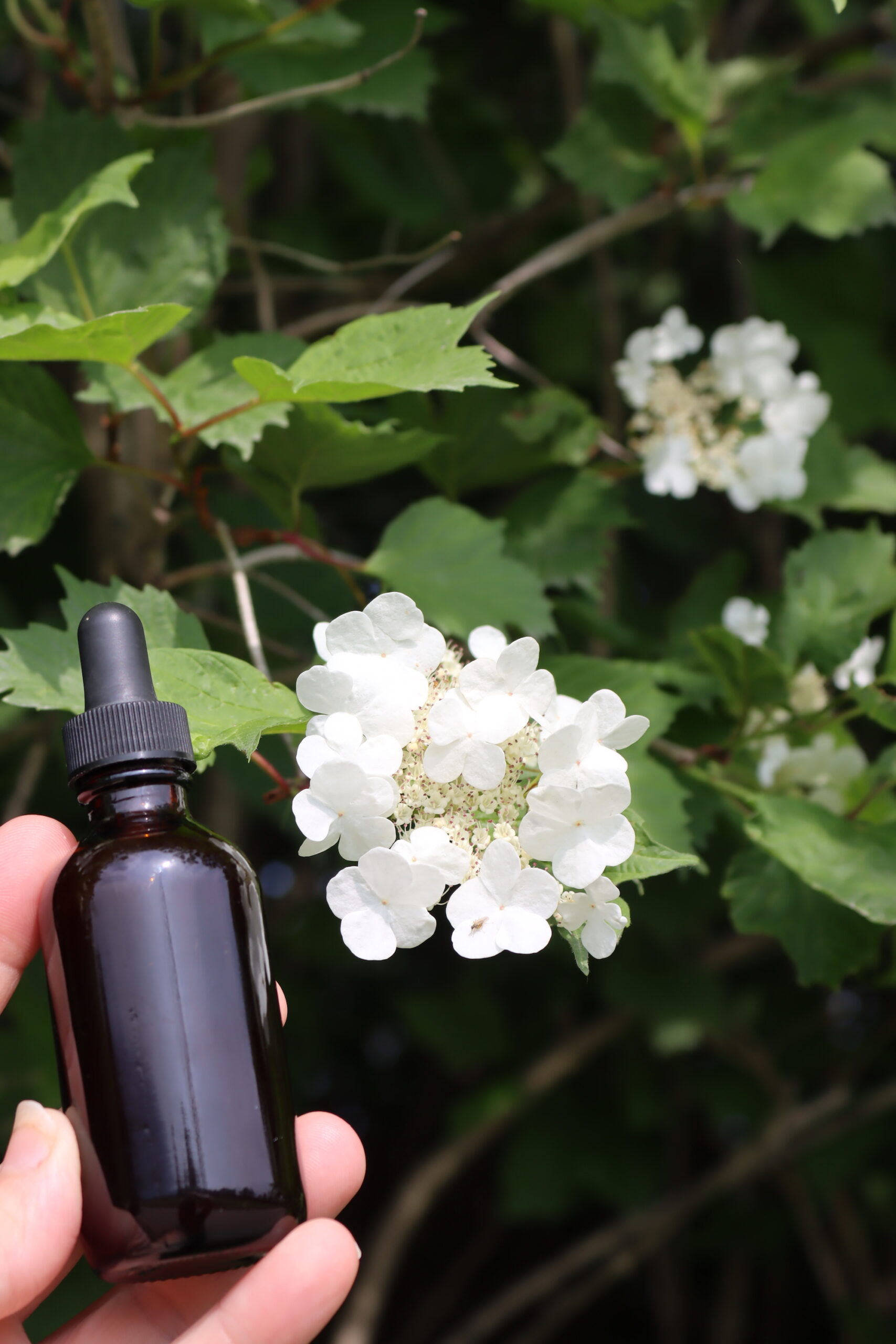
How to Make Crampbark Tincture
To make a Crampbark tincture, you’ll need the following ingredients and equipment:
- dried crampbark (of fresh, if available)
- Vodka (or any other palatable alcohol that’s at least 80 proof/40 percent — there’s no need to splurge here, I always use Smirnoff because it’s inexpensive and has a neutral taste)**
- One-pint mason jar with lid (amber glass is ideal, but as long as you keep the tincture away from light at all times it won’t make a difference)
- Funnel
- Cheesecloth
- Fine mesh sieve
- Amber glass tincture bottles (with dropper)
**Never use isopropyl/rubbing alcohol for tinctures (or any other remedy you plan on ingesting). Even in small amounts, this type of alcohol is toxic and meant for external applications only.
The Herbal Academy’s tincture making course specifically recommends using 40% alcohol when working with crampbark (though they recommend as low as 25% for mucilaginous herbs, and up to 95% when working with plant resins. Crampbark just happens to fall right in the middle, since it has both alcohol soluble and water soluble constituents).
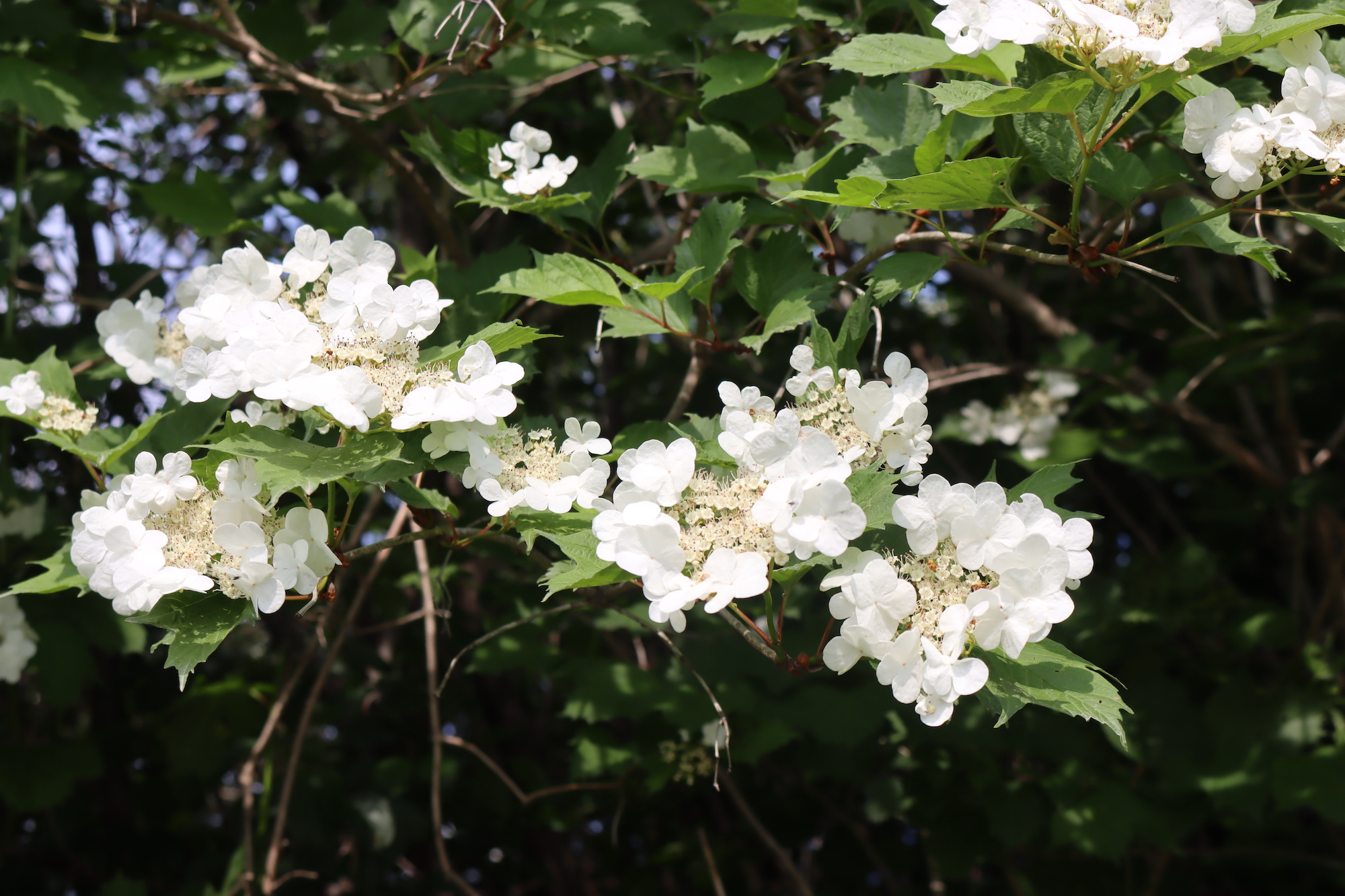
To make the tincture, fill a jar about 1/2 way with dried herb, or 3/4 full of fresh herbal material.
Cover the herbs with vodka, or whichever alcohol you’ve chosen, and seal the jar with its lid.
Keep the developing tincture in a cool, dark place and give the jar a gentle shake every few days (daily is even better, but tinctures are, fortunately very forgiving when it comes to precise shaking schedules).
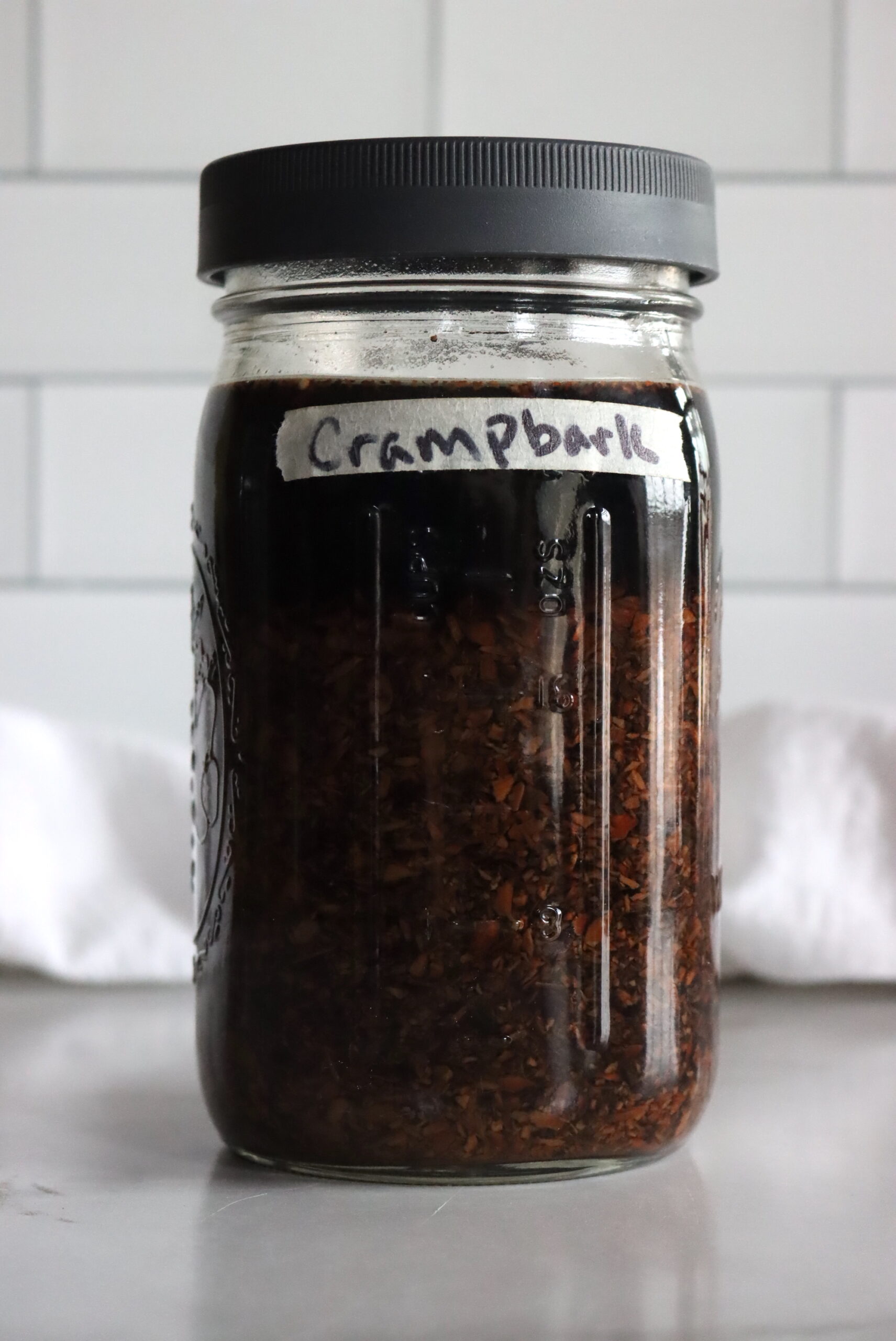
After about 4 to 6 weeks, it’s time to decant the tincture.
To do this, you’ll need to line a funnel with a few layers of cheesecloth (you can skip the cheesecloth if the pieces of crampbark are larger). Carefully strain the tincture into small amber glass tincture bottles, squeezing the roots to make sure all the liquid is expelled.
Once the tincture has been decanted, label the tincture bottles with the date and suggested dosages (I use a small piece of masking tape and a marker, it peels off easily when I’m ready to use the bottle for something else).
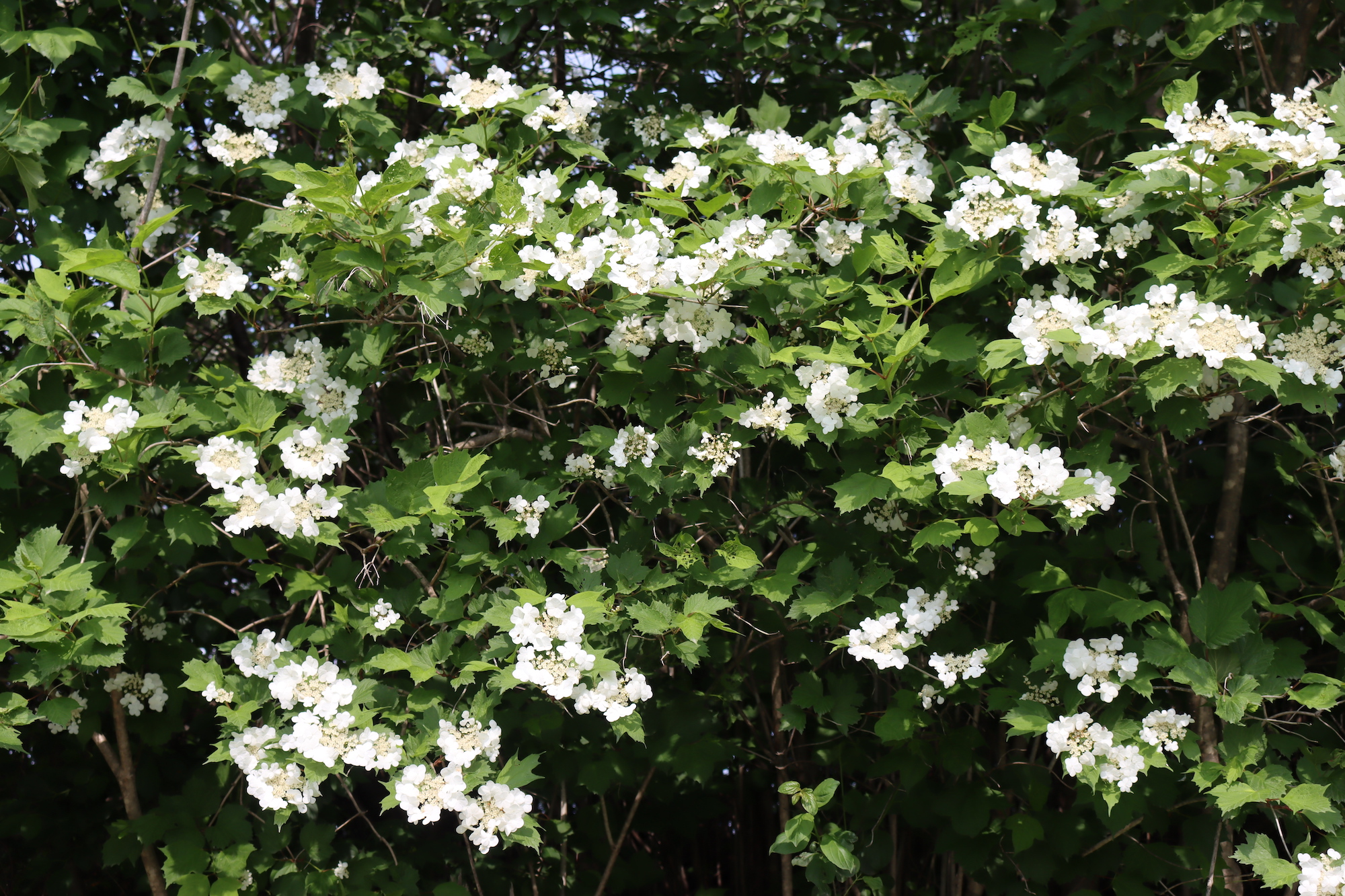
For more information on the general process, I’d suggest reading this guide to making herbal tinctures at home. Or, for an even more detailed guide, check out the Herbal Academy’s Tincture Making Course.
I know 4-6 weeks can be a long time to wait if you’re desperately needing relief now. There’s nothing wrong with buying a bottle of crampbark tincture to use while your homemade tincture infuses. Purchased tinctures are a lot more expensive than DIY homemade ones, but they have the benefit of being ready when you need them, like now.
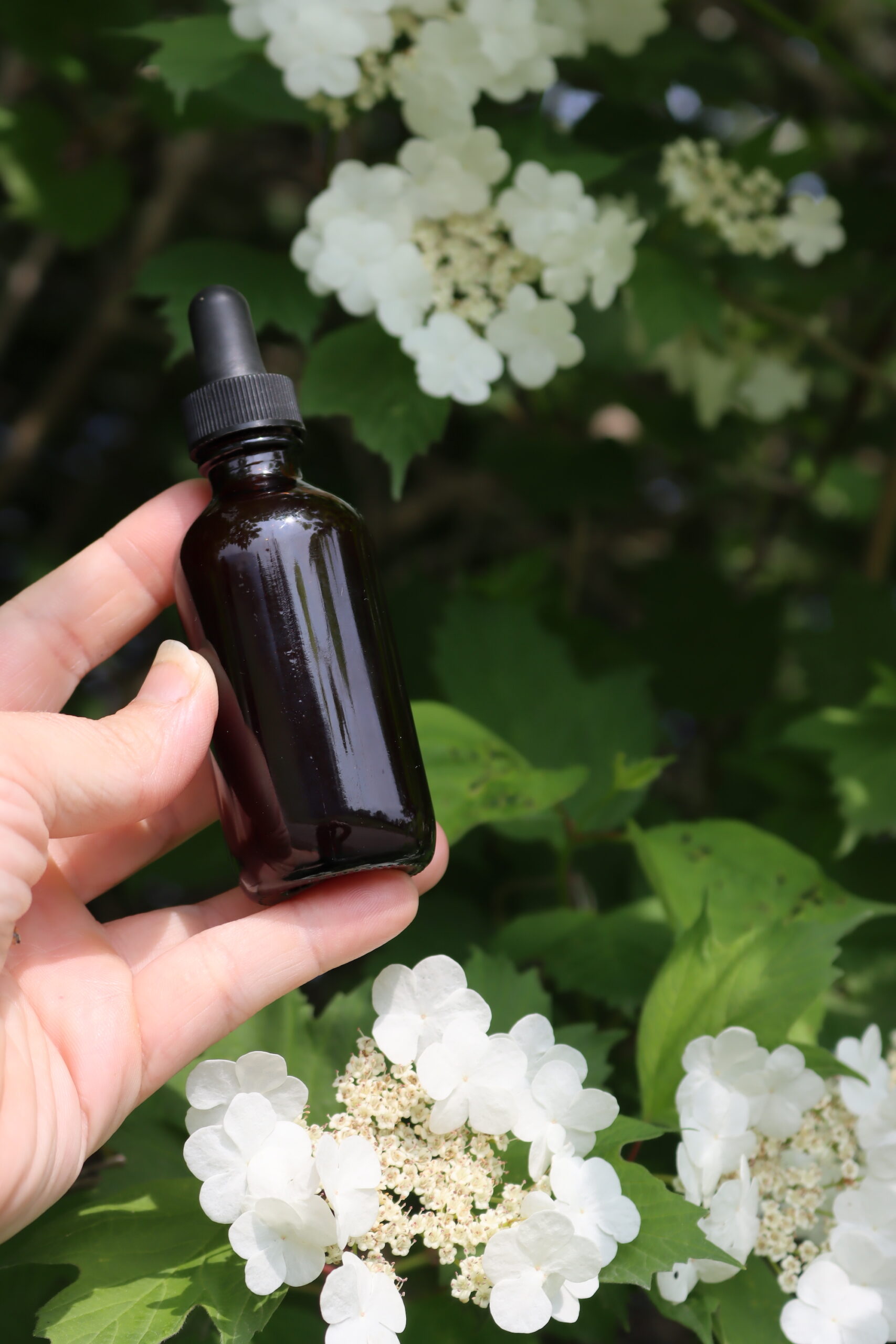
Crampbark Tincture Dosage
For an exact dosage specific to your body and needs, I’d suggest consulting a clinical herbalist.
Generally, the dosage for crampbark tincture is is around 1 to 2 dropperfulls, taken several times daily (1 to 4 times) as needed to relieve symptoms. Crampbark tincture is supposed to be relatively fast acting, and I’ll take a few doses back to back (2 or 3) if symptoms persist, but if that doesn’t do it I’ll look for other remedies (like a hot shower, rest, etc).
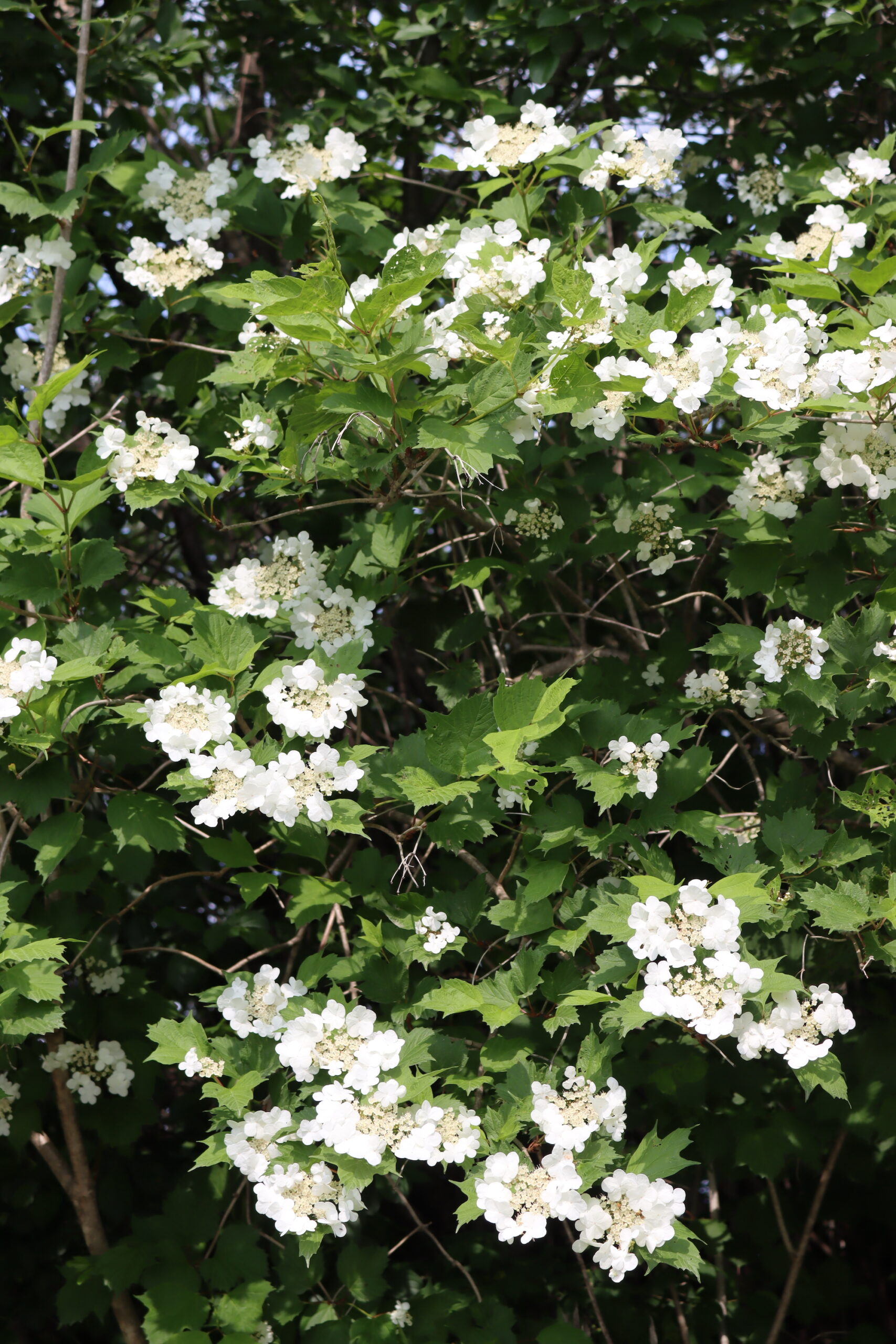
Crampbark Formulations
Crampbark goes well with other soothing, pain relieving herbs such as willow bark, wild lettuce and chamomile. I’ve mixed it with sedatives like valerian tincture when I’m trying to get relief and restful sleep at the same time.
If you’re interested in the science behind combining herbs to enhance their effectiveness, I’d recommend taking this online course in Mastering Herbal Formulations from the Herbal Academy. It covers the science of blending herbs into homemade formulations in detail.
They also cover crafting herbal tincture blends in Herbal Academy’s Tincture Making Course.
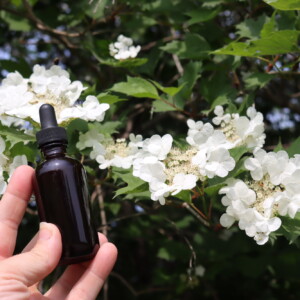
Crampbark Tincture
Equipment
Ingredients
- Dried Crampbark
- Neutral Spirit such as vodka*
Instructions
- Begin by filling a clean mason jar halfway with dried crampbark, or about one-third full if using fresh crampbark. Ensure the herb is packed tightly but not compressed. If you're using dried crampbark, it will expand slightly when infused.
- Pour your chosen alcohol—typically vodka, but brandy, rum, or any high-proof alcohol (60 proof or higher)—over the crampbark until it's completely submerged. The alcohol will extract the medicinal properties of the herb, so it’s crucial that the plant material stays fully covered. Fresh crampbark will release some moisture into the tincture, so more alcohol may be needed to cover the herbs completely.
- Seal the jar tightly with a lid and gently shake to mix the alcohol with the crampbark. Place the jar in a cool, dark location to allow the tincture to infuse. Let it sit for 4 to 6 weeks, giving the mixture time to extract the active compounds from the herb.
- Every couple of days, shake the jar gently to ensure the crampbark is evenly saturated with the alcohol. It's important to check periodically that the plant material remains submerged in the liquid, especially if using fresh crampbark, which can float above the surface. If necessary, add a little more alcohol to keep the herbs fully covered.
- After 4 to 6 weeks, strain the tincture through a fine mesh strainer or cheesecloth into a dark glass bottle. Use a funnel to guide the liquid into the bottle, and press the crampbark gently to extract all the liquid. Discard the herb material once you’ve strained out all the tincture.
- Label the tincture with the date, contents, and recommended dosage. Store it in a cool, dark place, away from direct sunlight, to preserve its potency. Crampbark tincture can last for several years if stored correctly.
Notes
Expected Yield
The amount of tincture you end up with depends on whether you’re using fresh or dried crampbark. Fresh crampbark will release more liquid into the tincture, while dried crampbark may absorb some of the alcohol, giving you slightly less than what you initially added. For a quart jar, you'll typically need about 2 to 3 cups of alcohol, or 1 to 1.5 cups if you're using a pint jar. Always check that the plant material stays submerged and add more alcohol if necessary.Alcohol-Free Option: Glycerite Tincture
If you prefer an alcohol-free option, you can make a glycerite tincture using vegetable glycerin. For this method, cover dried crampbark completely with a mixture of 3 parts glycerin to 1 part distilled water. If you are using fresh crampbark, use only glycerin and omit the water. Shake the mixture daily, and after 6 to 8 weeks, strain it just as you would an alcohol tincture.Disclaimer on Homemade Herbal Remedies
I’ve been foraging wild medicines and treating my family with herbal remedies for the past 20 years, but I’m self-taught. Be aware that I am not a clinical herbalist, and this is based on my own research and personal experience using medicinal plants. I do not claim to have the experience that’d qualify me to advise you on your health, and I’m only providing this as a reference to encourage a broader interest in medicinal plants.
Please use this as a jumping-off point, but always do your own research and verify anything you read with multiple sources.
It’s always possible to have an adverse reaction to any medicinal herb, and plenty of people are allergic to even gentle herbs like chamomile. Always consult your doctor or a certified herbalist before trying any new medicinal plant. Often, they can have unintended reactions in combination with other herbs and supplements, and many herbs have side effects even when they are effective for their intended purpose.
If you are seriously interested in herbal medicine, I’d suggest investing in a course in herbal medicine, and I’d recommend any of the online courses put out by the Herbal Academy of New England. Specifically, the introduction to herbal medicine course and the family herbalist group of courses.
For resources related specifically to tinctures,I’d recommend the Herbal Academy’s Tincture Making Course which covers everything you could ever want to know about making more than 100 different herbal tinctures, as well as half a dozen tincturing methods.
They also have a mushroom course, covering both medicinal and edible mushrooms, and a Botany and Wildcrafting Course. I’ve taken both and they’re informative, inspiring, and artfully presented.
Herbal Tinctures
Interested in making other homemade herbal tincture recipes?
- Yarrow Tincture
- Chickweed Tincture
- Elderberry Tincture
- Dandelion Tincture
- Burdock Tincture
- Echinacea Tincture
Herbal Medicine Making
Herbal medicines don’t stop at tinctures! Learn how to make more homemade medicine…
